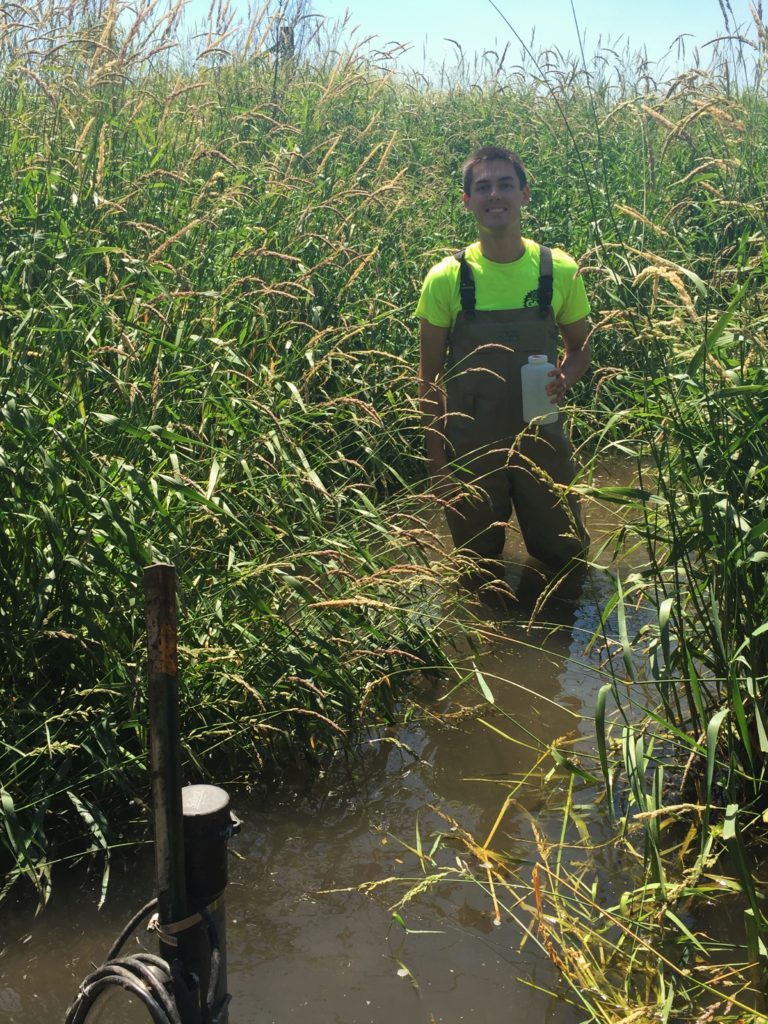
Written by Conrad Brendel, Graduate Research Assistant in Agricultural & Biosystems Engineering, Iowa State University. Brendel, along with Michelle Soupir from the Agricultural & Biosystems Engineering department at Iowa State University, are recipients of the Iowa Water Center annual grant program.
Black Hawk Lake is an important recreational resource in Iowa. Recently, the lake has had high levels of algae and turbidity. High levels of algae is problematic because it inhibits the natural function of aquatic ecosystems. Turbidity, or the suspension of particles within a water body, also has a negative impact on water quality. The cloudiness within water systems can affect light penetration and can also reduce the volume water systems can hold, and therefore, reduce the space that aquatic habitat can live in. With support from Iowa Department of Natural Resources and other funding sources, such as the Iowa Water Center, we are monitoring the water quality at three sites in the Black Hawk Lake watershed. This is with the goal of determining the effectiveness of strategies used to address the algae and turbidity problems.
In our research process, we collect samples from surface flow at each of these sites and samples from drainage flow at two of the sites. With funding from the Iowa Water Center, we were able to expand our goals to include:
- Comparing the phosphorus concentrations in runoff vs. drainage flow during precipitation events.
- Applying the phosphorus model, ICECREAMDB, to Iowa agricultural watersheds.
Understanding the sources and contributions of phosphorus losses and the ability to model them is important so that we can anticipate the needs for future water quality improvement projects.
This year, we collected samples during four rain events from April to June, and collection occurred at three-hour increments. We collected samples from before the rush of storm water, during the peak of the storm, and after the storm as flow rates decreased. Once in the lab, we analyzed our samples for phosphorus and TSS and compared them to the storm hydrographs. Total Suspended Solids, or TSS, is an indicator measurement of turbidity. A hydrograph shows the rate of flow versus time at a specific point in a creek, stream, or river. We found that phosphorus and TSS follow a similar pattern to the storm hydrographs which indicates that they are more likely to enter surface waters during precipitation and high flow conditions.
When we compared the phosphorus concentrations in runoff and drainage flow at the different locations, we found that the runoff phosphorus concentrations were greater than the drainage phosphorus concentrations at one site and that they were approximately equal at the second site. The focus of phosphorus reduction strategies has typically been on surface runoff, but these results show that strategies to reduce the phosphorus and TSS loadings into the lake must also focus on drainage flow. We are hoping to collect samples from one more storm event this fall after harvest so that we will have data from spring, summer, and fall.
We are also using a modeling process to further examine phosphorus concentrations in runoff and drainage flow. ICECREAMDB is a model developed to simulate phosphorus losses through tile drainage. The model requires databases for climate, land management, and soil parameters. So far, we are running the model on test data and next we will apply the model to the Black Hawk Lake watershed. We plan to have the model calibration completed by the end of the year.
Check back soon for more updates from Iowa Water Center sponsored projects!
